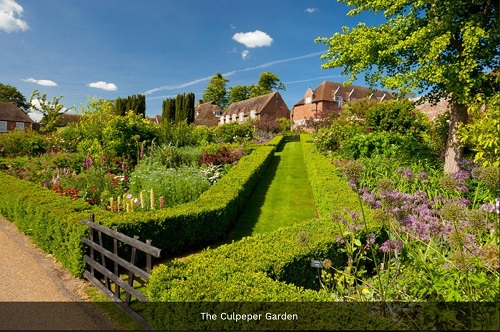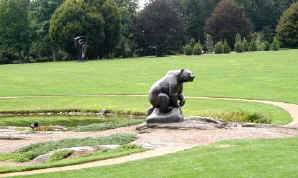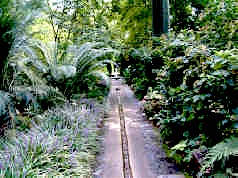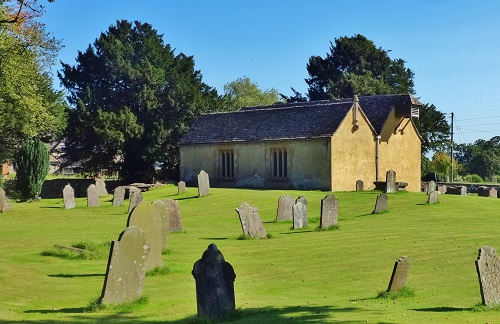
Russell Page is considered to be the foremost landscape architect of his time. A designer whose work throughout his life, continually enriched the cultural and physical landscape. Russell Page studied at the Slade School of Art in London and Paris before his passion for plants led to a career as a professional garden designer in 1928.
In 1935, Russell Page went into partnership with Geoffrey Jellicoe although they became good friends, the partnership didn’t work for financial reasons.
 From 1945 until 1962, Russell lived and worked in France and enjoyed an international practice, undertaking commissions in Europe , the Middle East and North and South America . His was a rare talent, a combination of artistic flair and an expert horticulturist. Russell noted “we live under an accumulation of periods and styles and cultures.”
From 1945 until 1962, Russell lived and worked in France and enjoyed an international practice, undertaking commissions in Europe , the Middle East and North and South America . His was a rare talent, a combination of artistic flair and an expert horticulturist. Russell noted “we live under an accumulation of periods and styles and cultures.”
He was involved in all types of gardening projects from small private cottage and town gardens to public projects and landscaped corporate parks. Russell was unique, not only because his projects were so diverse, but because his understanding of and empathy with, European gardening traditions and Islamic gardens was so comprehensive along with his extensive knowledge and use of trees and plants.
At PepsiCo’s world headquarters in New York , Russell Page not only designed the landscape and laid out the grounds, which include a stunning Water-lily garden, he was involved in commissioning and selecting the sculptures, carefully siting individual pieces such was his enthusiasm and commitment to his work.
In 1962 Russell’s eloquent book ‘The Education of a Gardener’ was published and is now recognised as an authority on garden design and fount of wisdom regarding plants.The essence of Russell Page is best captured in his own words :- “Whether I am making a landscape or a garden or arranging a window-box I first address the problem as an artist composing a picture ; my pre-occupation is with the relationship between objects whether I am dealing with woods, fields or water, rocks or trees, shrubs and plants or groups of plants.” He also commented on Gardens "there was one thing you cannot change and that is the owner" - I do not imagine that owners always liked his designs.

Some of Russell Page’s work can be admired at Leeds Castle and Port Lympne in Kent, Longleat and Sturford Mead in Wiltshire, Overbury Court,Worcestershire and West Wycombe Park, Buckinghamshire. He also designed much of William Walton's garden (The famous composer) on the Isle of Ischia off the Italian coastline. You can see this garden on one of our holiday tours.
No words to describe this genius!.How as a landscape gardener, could I have taken ten years to discover his works!!. He is obviously and sadly unknown for his contribution to timeless gardening.
Nicholas Whitehorn - Cape Town, South Africa
THE RUSSELL PAGE TRAIL -
In 2006 we recently received an email asking if we could help with recovering archives for a garden in France designed by Russell Page. Follow our intriguing trail.
We have omitted email addresses and names of corresponding parties to protect their privacy.Paul Leitch - Editor of Great British Gardens
3 January 2006 - FranceGood afternoon, We own a house, the garden of which was designed by Russell Page (in the 1950's I think). I would love to find some original designs, projects or any other documents related to our property. Do you know if someone took care of his archives when he died ? I do not know if you can help, but any lead would be highly appreciated. Best regards, and happy new year.
4 January 2006 - England ( response to France )Cannot find anything but why not contact Lady Walton on the Island of Ischia (Italy) where he spent a lot of time helping with the design of the La Mortella Garden.
Good luck. Let me know how you get on.9 January 2006 - Italy ( reply received from Superintendent of Gardens - La Mortella)
In 1998 I organized an exhibition about Russell Page with the American Academy in Rome. On that occasion I reviewed his archive, which was then kept in a very precarious and unofficial arrangement at the Kalmthout Arboretum, Belgium.
Russell Page left all his papers to the Family De Beldeers, who were personal friends of him; I do not know what the arrangements were at the time between M.me Helena De Beldeer, who legally owned the archive, and the new management of the Arboretum; what I know is that I found the papers kept in open boxes, in a sort of a garage, without any proper archival device to preserve them against pests, humidity etc.
The person in charge of the archive at the time was an architect, Mr. Benoit Fondue, who claimed that he had almost finished a catalogue raisonée of the archive, but this catalogue actually never came out. However Mr. Fondue had made several lists of the papers, and I would suppose that since M.me De Beldeers has died the collection must have been passed over to the Arboretum. I would think he is still in charge; I hope the drawings and other papers have not passed into private hands and have received the attention they deserve.
I suggested at the time that the whole bulk be passed to a serious archival institution that would give the documents the proper care, and a place where researchers and scholars could have easier access and facility, but to no end.
I would suggest then that now the person to contact is the general director of the Arboretum, and I am copying this message to their email address.12 January 2006 - England ( email to Kew Gardens London - home to some of the most important Garden Archives in the world)
I spoke to you recently regarding archives for Russell Page.
We were recently asked for help in finding an archive for a garden in France designed by Russell Page. Following a trail we have recently received an email from - Superintendent of the Gardens at La Mortella.
She has suggested that the archives should be kept at a serious archival institution and I think Kew would be an ideal place.
It would be such a loss if these papers were lost to future generations and I am wondering if you would like to pursue this.13 January 2006 - Belgium - Email from Kalmthout Arboretum
Dear all,
The archives of Russell Page still belong to the de Belder Family. They are now archived in the estate Hemelrijk in Essen, nearby the Arboretum Kalmthout in Belgium.
After Mr. Fondu has been working on this archive there has been done a lot of work. Nowadays the condition of storage is a lot better than the situation you describe. Now it is also structured.
If you would like to have some information about the archive you should contact Daniel De Belder
Since Mrs Jelena de Belder died, he is now the person to contact about Russell Page's archive and the library of de Belder.
Hopefully this information will help you to find the information needed/wanted.
Many greetings.13 January 2006 - England to French Garden Owner-
This is really exciting news and with a bit of luck your archives may be there. In any event you may have contributed to ensuring his papers exist for future generations. Look forward to further news
February 6 2006 - Belgium Garden Writer to England -
I came upon your quest perchance. It so happens I have just published a book about the De Belders titled Jelena and Robert De Belder, Generous as Nature herself. (see www.debelderbook.be). Quite a few Pages are devoted to the extraordinary friendship between Page and Robert De Belder. Russell Page did indeed leave his archive to Robert when he died. Robert suffered a stroke soon after and therefore nothing was done about finding a suitable place for these archives. If you need any help getting in touch with the family just let me know.
February 7 2006 - England to Belgium Writer -
Many thanks for taking the time to contact me. The book you have written sounds really interesting. Russell Page must have been very close to the De Belders for him to leave his archives to them.
It seems that Russell Page may have had more friends in Europe than the UK as it seems he spent most of his time abroad. I think he is now recognised as one of the leading garden designers of the 20th century.
I know that Kew Gardens in London would be interested in maintaining the archives for future generations in a safe environment but I also recognise that they were trusted to the De Belder family. If you have the opportunity perhaps you could ask that they might consider this.
If you have any information on how many documents and plans are held, I would be very interested. By the way can you tell me where Russell Page was laid to rest after his death?February 8 2006 - Belgium Garden Writer to England -
Page was indeed not a prophet in his own country. As a homosexual, he had fallen out with his family and was an extremely solitary person. At the De Belders, he found a family who loved and understood him for his qualities, a garden where he could experiment freely and a tremendous source of energy and inspiration.
When studying in France, he was helped and encouraged by André de Vilmorin, a descendant of a remarkable family, devoted to plants for generations.
He had a good friend and admirer in Gabrielle Van Zuylen (lives in Paris), who wrote a book about his gardens. The archives are sorted and kept in an attic in good conditions. I believe all his plans and sketches are there, except things previous to WWII, which all burnt when the building they were kept in was bombed. It must not be forgotten that R. Page had offered his archive to the RHS and the Victoria and Albert Museum, who turned down the offer! There had also been contacts, after his death, with Dumbarton Oaks, Washington D.C.
As to the place he was laid to rest, I quote a text on Page, written by Jelena De Belder, in my book : "The burial was simple and intimate. The Duke and Duchess of Beaufort offered a sheltered spot under an oak tree in their park, which he knew well."
It is always a pleasure to discuss remarkable people and ensure the interest in them remains alive.February 9 2006 - England to Belgium Garden Writer-
Thanks for the additional information. It paints rather a sad picture of his experiences with his family and own country.
I am surprised that the British Institutions turned down the archives but then again perhaps at the time they did not realise the impact that his work would have on people all around the world. The De Belders will be happy to know that if at any time in the future they want to find a home for the Archives then Kew Gardens will be interested.
I understand from the Duke of Beaufort that Russell Page was buried in an unmarked grave at Little Badminton Churchyard.November 7 2006 - France
We acquired the Domaine St jacques du Couloubrier in Grasse (Alpes Maritimes) 5 years ago . It was derelict, the house had not been lived in for 16 years and all was left to abandon. It was only some months later that we discovered that the water garden was a Russell Page creation from the 1950's.
We have spent the last 5 years restoring the house and the gardens. We followed a similar trail and got what was available from the De Beldeers archives but also from his book the education of a gardener where the water garden is well featured both in photographs and descriptive text.
We would be enormously happy to share our experience with this other proud owner.
William Waterfield of The clos du Peyronet in Menton has done a survey of many Russell page Gardens in the south of France. We were also fortunate to be given some photographs taken in the late 60's. Every little helped. This has been and is the most enormously rewarding and challenging project.November 21 2006 - United Kingdom
I met Benoit Fondu back in 1989 when we were both attending the Architectural Association's course on garden conservation in London. He told me of the Russell Page archive of drawings and in 1991. I started working on a book using them with Page's own writings and photographs made of the gardens in Page's day. I worked on this project for 10 years with the help of Mme de Belder and Page's secretary Helen Hogan. After many trips and interviews I learned that Page had left a quantity of his own photographs of the gardens with control of his copyright to his niece Vanessa Corbally Stourton. Use of them with Mme de Belder's drawings would have made a fantastic but scholarly book. Unfortunately working with Miss Stourton and the last publisher proved to be so difficult that I have gladly given the book up, thinking that Page would prefer to have his own book The Education of a Gardener as his legacy. In 2003 the Stourton photos could be seen in the RHS Lindley Library, London.
1 July 2007 - Belgium -I read about your interest regarding the late Russell Page archives quite recently.
As I had the chance to archive what he donated to the de Belders (formerly Arboretum Kalmthout) I was also very involved in research on his work. In 1998, it was with the help of the late Jelena de Belder and me, that some Italian projects were exhibited in Rome at the American Academy .I
t is also true that we were hoping storing these archives at the VA or the Albertine library in Brussels (the 3 places he choose in his will to have his archives) and had no reply from Dumbarton Oaks as Jelena thought it would be right place to store them properly.
It is true that, at the time, we were still cataloguing the archives he selected himself for a second book and we were still hoping to find the papers and projects he was working on just before he died.
Most strangely, his notebooks, address book, and drawings (as for Pepsico for instance) were never found; even his secretary could not trace them back.
Last month I read in a French art magazine that a now quite famous landscape designer had some archives in his possession ........
September 27 2007- Columbus Museum USA.
Have just read the interesting email correspondence on the above website with regard to Russell Page, his gardens, and his archive. As a matter of information, the Columbus Museum of Art, in the person of its then director, Budd Harris Bishop, commissioned a garden for the Museum in 1978, a little after the time that Page was working on the garden for the Frick Collection in NYC and about the same time he was working on the garden for Mr. and Mrs. Thomas Vail in Cleveland. The Garden opened here in 1979, and for a couple of years was home to the collection of sculptures from the garden of the Museum of Modern Art in NYC. MoMA was undergoing extensive expansion and renovation at the time, so the sculptures at Mr. Bishop's request came here.The Columbus Museum has an active Garden Club, formed in 1994, to support restoration and ongoing maintenance of our Russell Page Garden.
Recently one of the members of the Garden Club wrote to Mr. Fondue to ask about any drawings or plans for our garden that he might be able to share with us, as we have only some correspondence and the drawings made to Page's specifications by a local landscape architect. Mr. Fondue very obligingly and quickly photocopied the drawings for our garden from the archive and sent them to us. In return, we sent him a set of the plans drawn up by the local landscape architect.I hope this may be of interest. I have also written a brief paper about our garden and its history. With best wishes.February 25 - From writer 2008 United Kingdom -
I don't want to be responsible for being the ultimate authority on
Russell Page. I never met the man but know he was very dignified and would not appreciate gossip, but I can help explain some things.
Page spent a great deal of time with the Beauforts and had known the late Duchess since her childhood. Page is buried in the old Badminton church yard, not near the house where Duchess now lies. She showed me the site two months before her death, and had put a straggly outline of
stones on the spot under a tree. There is a picture of it in the van Zuylen book. When I went to see it months later the whole side of the graveyard was red taped off limits, perhaps subsidence? I don't think the family wants people going there, it's a quiet spot far from the house. I would respect their wishes. David Beaufort knew him very well.
Page was quite a mystic and never spoke of such things to anyone outside that circle of his friends. One of the reasons I gave up my book was that The Education of a Gardener is a much better memorial to him than a biography. His literary heir, his niece, who holds his copyrights was uncooperative with me, however she has placed his own photographs at the RHS library where they may be seen but not published. The drawings at Hemelrijk are spectacularly beautiful and
would be a great help to anyone trying to restore the gardens. Very few of those gardens remain true to his vision now.
My book idea was to use the drawings and the photos (with his writing and direct interviews) together, using as little of my own conjecture as possible but one publisher wanted new pictures which were impossible and it all got too difficult. It's a lovely idea but I don't recommend
the project to anyone. Rest in peace!



